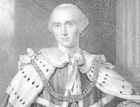Book Review: John: 3rd Earl of Bute
Clive Aslet reviews a tribute to the 3rd Earl of Bute, one of the greatest 18th century British collectors.


Collectors cannot expect monuments. Their hauls are generally dispersed at their death, their elegant houses demolished or turned into schools. It is difficult for art historians to piece together their achievement, since the task requires such rarefied and diffuse knowledge; the detective trail has to be pursued through old bills and bank accounts
Occasionally, a Francis Russell will come along. John, 3rd Earl of Bute, the subject of this urbanely erudite, soberly handsome volume, would be particularly pleased to know that his private world has been reconstructed. He was a much better collector than a politician.
As prime minister, Bute had the misfortune to follow Chatham, and inevitably suffered by the comparison. It got the reign of George III off to a bad start. The young King, however, adored him. He deferred to Bute in everything. Fortunately, Bute had so thoroughly cultivated his own tastes that it was a joy, as well as a duty, to shape his royal charge as a connoisseur.
In contrast to George II, who was happy enough to be painted by Shackleton, Bute promoted the much greater talents of his suave fellow Scot, Allan Ramsay. He encouraged George III to buy books, medals, paintings, antiquities, scientific instruments and Buckingham Palace. The British Museum and the British Library, as well as the Royal Collection, are all in his debt.
At Eton, Bute had the luck to find a friend who exactly shared his tastes. Sir Thomas Worsley was just as mad about architecture, collecting and landscape; the pair also loved horses, building manèges on their respective estates for the practice of haute ecole. While Worsley went off to improve Hovingham, in Yorkshire, Bute cut his aesthetic teeth on Mount Stuart. There the '45' referred not to the Jacobite rebellion but a 45ft-wide avenue.
Although he had woodworking, as well as architecture, to pass the time, it was not enough for long. 'I have not a friend, nor indeed hardly a relation, within 50 miles of me,' he moaned. On coming south, he soon found a place within the rackety but cultivated circle of Frederick, Prince of Wales. On the latter's death, he maintained what Mr Russell insists was a platonic friendship with his widow, living at Kew. His passion for botany gave us Kew Gardens. Interestingly, he seems to have recommended the modest Sir William Chambers for royal works, preferring the flashier Adam brothers for his own.
To the London mob, Bute made himself so unpopular that he was forced to sell his town palace before it was finished. But at least he now had, through his wife, riches to ease the burdens of retirement. He built a house in South Audley Street, a 'cottage' by the sea (Highcliffe) and altered Mount Stuart, sometimes simultaneously. And all the while his magnum opus of Luton Park was being finished. Long consideration with Robert Adam had gone into the plans, Bute's involvement extending, apparently, to the detail of the water closets.
Exquisite houses, the beauty of Nature, and how to get the most from your life, straight to your inbox.
'I never saw so magnificent and so pleasant a library,' exclaimed Mrs Delany ? as well she might, since no fewer than five rooms were needed to house Bute's superb collection of books. Upstairs, Lady Mary Coke was so concerned that her maid's hands might not have been clean that she slept with one half of the white satin curtains undrawn. Once wound, the 'clock organ' could play Handel and Correlli for an hour and a half at a stretch.
Like George III, Bute enjoyed an uncharacteristically happy marriage; but the time that, as a father, he might have spent with his own children was lavished on the future George III. Not surprisingly, they went to the bad.
Country Life is unlike any other magazine: the only glossy weekly on the newsstand and the only magazine that has been guest-edited by His Majesty The King not once, but twice. It is a celebration of modern rural life and all its diverse joys and pleasures — that was first published in Queen Victoria's Diamond Jubilee year. Our eclectic mixture of witty and informative content — from the most up-to-date property news and commentary and a coveted glimpse inside some of the UK's best houses and gardens, to gardening, the arts and interior design, written by experts in their field — still cannot be found in print or online, anywhere else.
